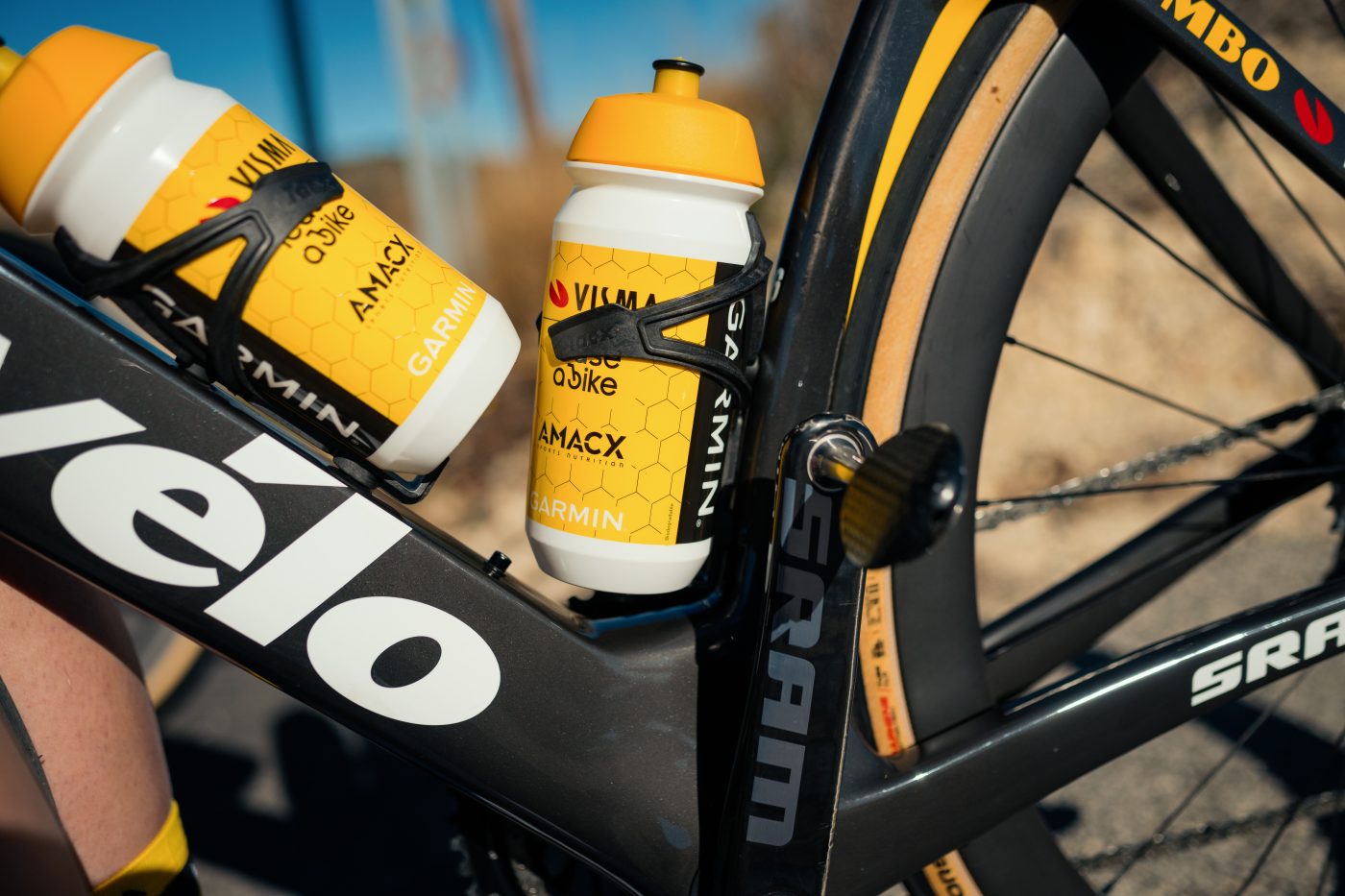

Question: “Did you think about drinking enough liquid today?!” Answer: “Yeh-ess!” For many, whether training or during a course, this is a well-rehearsed discussion. We all know that ‘staying hydrated is important’. But what should you drink? And when have you had enough?
Depending on age, gender, and physique, the human body consists of between 40 and 70% water. Water takes care of, among other things, the transport of waste and nutrients, temperature regulation, and serves a protective function for organs and joints.
Dehydration
Here are the basics: the largest volume of liquid is lost through urination and sweat, (and sometimes, diarrhea). The easiest way to replenish is through drinking. With this in mind, you can better understand how to guard against dehydration, and how environmental factors can influence your levels of liquid loss. Temperature and humidity will influence how much you sweat, and the concentration of sodium in your blood affects how much you pee.
A loss of liquid equivalent to about 2% of your body weight can have negative effects on your riding performance, research shows. Losing 5% can cause more serious symptoms of severe dehydration like drowsiness, fatigue, confusion, and at the end even shock. To prevent this, you have to drink enough – but how do you when you have ‘enough’? The easiest way is to measure if you still can pee after a long training ride or course. If you can’t, then you probably drank too little. You can also objectively measure your liquid loss by weighing yourself on a scale before you ride, and again when you come home. The difference in weight afterwards is what you lost in liquids while riding (with the conversion being 1 kilogram = 1 liter of moisture).
Electrolytes
Another important point to remember: sweat is not water. Sweat consists in large part of water, but also contains electrolytes like sodium and chloride. Electrolytes are small ions which dissolve in blood. Sodium is the most important electrolyte you lose through sweating. If you sweat a lot, you can cause an abnormally low level of sodium in your blood, also known as hyponatremia. Symptoms can include nausea, general malaise, headache, confusion, and reduced level of consciousness – all of which will hinder your performance on the bike!
Whatever food you choose to fuel up on your rides – solid or liquid – the processing of the nutrients contained within them starts in your mouth. After you swallow, this process continues in your stomach. The nutrients are stored for a while, so they can mix with digestive juices in order to break down the enzymes. This can take 15 minutes to a few hours, depending on what you consume. When your food or drink reaches your intestines, then the nutrients and moisture content are absorbed into your bloodstream.
Osmosis
Chewing and the movement of your food and nutrients throughout your body are active transport mechanisms. After your digestive system has used mechanical and chemical processes to break down whatever you’ve consumed, and your food has reached your small intestine, your body absorbs important nutrients through osmosis. Osmosis is a form of passive transport which plays a key role in your digestive system. Osmosis allows your body to absorb the nutrients (which came from food and drink) into your intestines and individual cells. Then, your blood distributes the nutrients to where they are needed in your body.
Water follows this same osmosis process: think of a towel absorbing water. The water moves from an area of high concentration to an area of low concentration. Osmosis continues until the whole towel has absorbed as much as it can. In practice, adding some sugar to the water in your bottle helps the water to be better absorbed into your body.
Suppose that you sweat a lot, and you decide to replenish your liquid loss by drinking lots of water – no Gatorade or energy drinks, nothing in your water – just plain ol’ water. This is fine, but thinking about osmosis, plain water isn’t the easiest to absorb to replenish lost liquid. There is a difference in the concentration of molecules in your intestines than in your blood. The amount of water and electrolytes in your blood will decrease by sweating a lot. In effect, your blood becomes more concentrated. By drinking plain water, yes, the water will replenish lost water, but it will not replenish the lost electrolytes. So basically, while you are absorbing water, you’re contributing to the further dilution of what electrolytes you have left.
Of course, after you drink a lot of water, you have to pee. Since that’s another way you lose electrolytes, you’re further depleting your supply of them. So it is possible to dehydrate from drinking too much plain water.
The ideal sports drink
Creating the ideal sports drink is very technical, but the basic idea behind them is that even by drinking a lot of water, without anything in it, you still can dehydrate. Solution: a sports drink. But with so many sports drinks on the market, it’s easy to get lost. So here is a breakdown of the sports drink in your bidon.
The goal of a sports drink is to supplement liquids, electrolytes, and deliver sugars to accelerate liquid absorption, in order to provide your muscles with extra energy. An ideal drink contains 4% carbohydrates, which is about 40 grams per liter. At this level, you use the nutrient transport systems as optimally as possible, encouraging water to be best taken into your bloodstream.
Next, the ideal sports drink is made to be hypotonic or isotonic. This means that the concentration of molecules is lower (hypotonic) or equal (isotonic) to the concentration of molecules in the blood. Water can be more easily taken up this way via osmosis in the blood. This is also the reason why you would like to avoid a hypertonic drink (often a drink with many carbohydrates). Specifically, a hypertonic drink has a higher concentration of molecules than what is in your blood. So, according to the rules of osmosis, water would moves from your bloodstream into the intestines, which is the opposite of the targeted effect.
Still a bidon with water
This isn’t to say that you never should have a bidon with just water. Water works perfectly for dilution. It’s a very good idea after taking a gel (a bomb of carbohydrates) to immediately drink some water as well. With this, you weaken the concentration of molecules in your stomach and intestines, which makes sure the carbohydrates and water are both better taken up.
How much you have to drink depends partly on how much liquid you lose on your route. One recommendation is to weigh yourself during training, so you can learn to estimate when you have been drinking enough during your bicycle tour. It’s good also to learn the differences between how you sweat under ‘normal’ circumstances versus in extreme heat, so that way you can anticipate how much extra you’ll need to drink. Research shows anticipating your liquid needs before setting off has a positive effect on performance (in other words: you don’t run out of gas). Take note: your stomach can process about 0.8 to 1 liter of moisture per hour, so drinking more than 1 liter within an hour before cycling is therefore unnecessary. There’s no need to ‘load up’. As a guideline for drinking while cycling, an amount to start is with about 0.4 liter per hour, which is about one small bidon per hour.